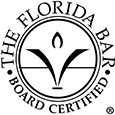What is eminent domain, and how does the fragility of a particular environment impact that process?
Eminent domain is a legal process in which the government or a private entity with government authorization can take private property for public use, provided that the owner is compensated fairly. When eminent domain is used in fragile environments, such as wetlands, forests, or endangered species habitats, strategic representation may be needed to ensure that the interests of the environment are adequately considered in the decision-making process.
Strategic representation may involve engaging experts in ecology, hydrology, or other fields to provide information on the ecological impact of the proposed project. It may also include developing legal arguments highlighting the importance of protecting fragile environments and the potential harm resulting from the proposed taking. Additionally, strategic representation may involve working with community groups or other stakeholders to build public support for protecting the environment.
Ultimately, strategic representation for fragile environments in eminent domain disputes aims to ensure that the interests of the environment are given appropriate consideration in the decision-making process and that any impacts on the environment are minimized to the greatest extent possible.
Need help with a matter related to strategic representation for fragile environments in eminent domain disputes? Schedule your consultation today with a top land use and zoning attorney.
In Florida, which laws and regulations apply to eminent domain disputes and, more specifically, fragile environments?
Several laws and regulations in Florida relate to strategic representation for fragile environments in eminent domain disputes. Some of these include:
- Florida Constitution, Article X, Section 6: This section provides that private property may not be taken for public use without just compensation to the owner and sets forth the procedures for eminent domain proceedings.
- Florida Statutes Chapter 73: These statutes provide the procedures and guidelines for eminent domain proceedings in the state, including requirements for notice, compensation, and other matters.
- Environmental Resource Permission (ERP) Program: This program is administered by the Florida Department of Environmental Protection and regulates the construction, operation, maintenance, and repair of projects that may affect wetlands, water bodies, and other environmentally sensitive areas.
- Florida Endangered and Threatened Species Act: This act protects and conserves endangered and threatened species in the state, including measures to mitigate the impacts of development and other activities on these species.
- Florida Water Resources Act: This act regulates the use, management, and protection of the state’s water resources, including wetlands, rivers, lakes, and aquifers.
What are common issues regarding strategic representation for fragile environments in eminent domain disputes that lead to litigation?
Common issues regarding strategic representation for fragile environments in eminent domain disputes that lead to litigation can include:
- Valuation of the Property: In eminent domain cases, the government or private entity must pay the owner of the property fair compensation for the taking. However, there can be disagreements about the property’s value, mainly when it is difficult to determine the environmental and ecological value of the property.
- Mitigation Measures: In some cases, the government or private entity may propose mitigation measures to offset the environmental impacts of the taking. However, there can be disagreements about the effectiveness of these measures and whether they adequately address environmental concerns.
- Environmental Impact Assessment: The government or private entity must conduct an environmental impact assessment to evaluate the potential ecological impacts of the taking. However, there can be disagreements about the scope of the evaluation, the methodology used, and the conclusions reached.
- Public Interest: Additionally, the government or private entity must demonstrate that the taking is in the public interest. However, parties commonly disagree about whether the proposed project serves a legitimate public purpose and whether the benefits outweigh the environmental and ecological costs.
- Regulatory Compliance: The condemnors must comply with all relevant laws and regulations, including those related to environmental protection. However, disagreements exist about whether the project complies with these requirements and whether additional protections are necessary.
When a set of facts is appropriate, there are many paths a claimant may take. We are value-based attorneys at Jimerson Birr, which means we look at each action with our clients from the point of view of costs and benefits while reducing liability. Then, based on our client’s objectives, we chart a path forward to seek appropriate remedies.
To determine whether your unique situation may necessitate litigation, please contact our office to set up your initial consultation.
What are effective measures to manage common risks while representing property owners in an eminent domain dispute?
Eminent domain is the federal or state government’s sovereign right to take private property for a public purpose. Thus, litigation is unavoidable if such a taking is required and justified. Consequently, counsel can incorporate the following strategies to enhance the quality of their representation for the owners of property in fragile ecosystems:
- Developing a Clear Strategy: A clear strategy at the outset of the process can help ensure that all stakeholders are aligned in their goals and that potential issues are proactively identified and addressed.
- Early Engagement and Communication: Engaging with all stakeholders, including property owners, environmental organizations, and government agencies, as early as possible can help identify and address any concerns before they escalate and become more challenging to resolve.
- Conducting a Thorough Impact Assessment: Conducting a thorough environmental impact assessment that evaluates potential impacts on the environment and identifies potential mitigation measures can help demonstrate that the project is being designed and implemented in a way that minimizes environmental harm.
- Engaging Experts: Engaging experts in relevant fields, such as ecology, hydrology, or environmental law, can provide important information and insights to inform decision-making and help develop effective strategies for protecting the environment.
- Building Public Support: Public support for protecting the environment can be essential to effective representation. Engaging with affected communities and other stakeholders can help build support for protecting fragile environments and provide important information about the project’s potential impacts.
- Negotiation and Mediation: Engaging in negotiation or mediation can help identify common ground and develop solutions that address the concerns of all parties. This can help avoid costly and time-consuming litigation.
- Compliance with Regulations: Ensuring compliance with all relevant laws and regulations, including those related to environmental protection, can help minimize the risk of litigation by demonstrating that the project is being implemented responsibly and legally.
Frequently Asked Questions
Why is strategic representation important for fragile environments in eminent domain disputes?
Fragile environments, such as wetlands, coastal areas, and forests, are often at risk of harm or destruction during government exercises of eminent domain. Strategic representation can help ensure that the interests of the environment are adequately considered in the decision-making process and can provide a means of protecting these essential natural resources.
What role do government regulations play in protecting fragile environments in eminent domain disputes?
Government regulations, such as those related to environmental protection and species conservation, can play an important role in protecting fragile environments in eminent domain disputes by setting standards for environmental impact assessments and providing legal protections for sensitive habitats and species.
Have more questions about a situation related to strategic representation for fragile environments in eminent domain disputes?
Crucially, this overview of strategic representation for fragile environments in eminent domain disputes does not begin to cover all the laws implicated by this issue or the factors that may compel the application of such laws. Every case is unique, and the laws can produce different outcomes depending on the individual circumstances.
Jimerson Birr attorneys guide our clients to help make informed decisions while ensuring their rights are respected and protected. Our lawyers are highly trained and experienced in the nuances of the law, so they can accurately interpret statutes and case law and holistically prepare individuals or companies for their legal endeavors. Through this intense personal investment and advocacy, our lawyers will help resolve the issue’s complicated legal problems efficiently and effectively.
Having a Jimerson Birr attorney on your side means securing a team of seasoned, multi-dimensional, cross-functional legal professionals. Whether it is a transaction, an operational issue, a regulatory challenge, or a contested legal predicament that may require court intervention, we remain a tireless advocate every step of the way. Being a value-added law firm means putting the client at the forefront of everything we do. We use our experience to help our clients navigate even the most complex problems and come out the other side triumphant.
If you want to understand your case, the merits of your claim or defense, potential monetary awards, or the amount of exposure you face, you should speak with a qualified Jimerson Birr lawyer. Our experienced team of attorneys is here to help. Call Jimerson Birr at (904) 389-0050 or use the contact form to set up a consultation.
Here are some blogs written by JB attorneys that provide more information about strategic representation for fragile environments in eminent domain disputes:
- Protecting Property Interests, Maximizing Just Compensation and Entitlement to Attorney’s Fees in Eminent Domain Actions and Government Takings: Part I (jimersonfirm.com)
- Protecting Property Interests and Rights in Eminent Domain Actions and Government Takings: Part II | Jimerson Birr (jimersonfirm.com)
- Protecting Property Interests and Rights in Eminent Domain Actions and Government Takings: Part III – Regulatory Taking | Jimerson Birr (jimersonfirm.com)
- Protecting Property Interests and Rights in Eminent Domain Actions and Government Takings: Part IV | Jimerson Birr (jimersonfirm.com)
- Protecting Property Interests and Rights in Eminent Domain Actions and Government Takings: Part V | Jimerson Birr (jimersonfirm.com)
- Riparian Rights in Florida | Jimerson Birr (jimersonfirm.com)
- Inverse Condemnation Claims in Florida (jimersonfirm.com)

We live by our 7 Superior Service Commitments
- Conferring Client-Defined Value
- Efficient and Cost-Effective
- Accessibility
- Delivering an Experience While Delivering Results
- Meaningful and Enduring Partnership
- Exceptional Communication Based Upon Listening
- Accountability to Goals











